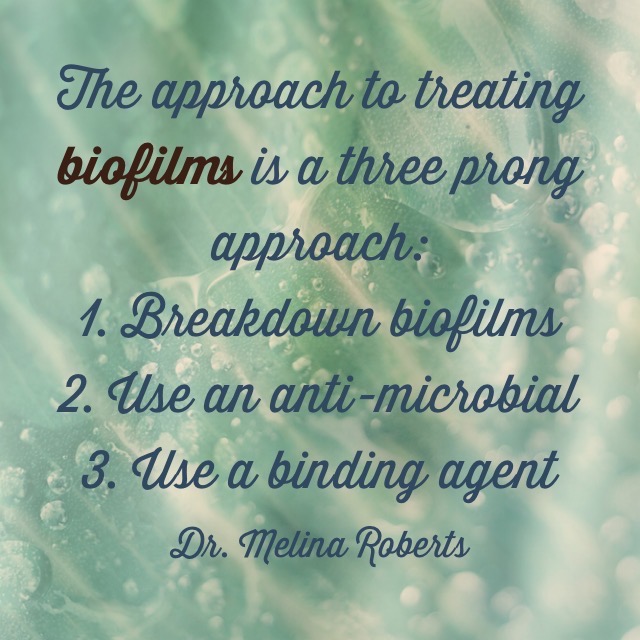Biofilms are a collection or community of different types of microorganisms that form together into a slimy, gluey consistency that will adhere to liquidy surface such as mucous membranes of the digestive tract. These biofilms will adhere to the lining of the digestive tract and will be an area of inflammation, an area of chronic infection and harbour an environment for infectious agents to live and hide from the immune system. There biofilms within the digestive tract can affect proper absorption of nutrients from the foods that we are eating, leading to nutrient deficiencies in us. These biofilms can sometimes be the underlying cause of chronic disease.
The approach to treating biofilms is a three-prong approach.
First we need to breakdown the biofilms. We can do this with a product called Nattokinase. Nattokinase are enzymes that breakdown biofilms. N-acetylcysteine (NAC) can also be used to breakdown biofilms. NAC is a precursor to glutathione, an antioxidant, and powerful molecule against biofilms. Lauricidin is another supplement that can be used to breakdown biofilms. Lauricidin (monolaurin) is natural surfactant found in coconut, it has anti-fungal properties and is also able to breakdown the matrix of the biofilms. Another therapy that we use to breakdown biofilms is ozone therapy, which is a powerful therapy for breaking down biofilms.
The second prong in the approach to treating biofilms is using an anti-microbial. Within those biofilms, infectious agents will harbour and when those biofilms are broken down, then these infectious agents can be liberated, therefore an antimicrobial is needed to kill off the infectious agent. One of the antimicrobials that works well is berberine. Berberine has antimicrobial properties which will help to kill of overgrowths of bacteria or fungi that can be living within those biofilms. Another substance that we can use is caprylic acid (C8), which is from coconut oil and had anti-microbial properties. Another product that can be used is oil of oregano.
The third prong in the approach to treating biofilms is to use a binding agent. We use the binding agent to bind to any of that toxic load that can be liberated from that biofilm as we break them down. One great binding agent is EDTA. EDTA is a chelating agent that can bind the metals that are often locked into the biofilms. EDTA can also bind minerals such as magnesium, calcium, iron, zinc and manganese which stabilize the biofilm matrix and form the cross-links of the matrix, therefore binding these minerals can decrease the structural integrity of the biofilm’s matrix. Other great binding agents such as chlorella, zeolite or activated charcoal.
This is an effective approach to breakdown biofilms, kill the infectious agents within the biofilms and bind toxins released from the biofilms. Then we need to have bowels moving effectively to ensure we have an avenue to effectively move the biofilms out of the body. This is our approach to safely and effectively treat biofilms.


